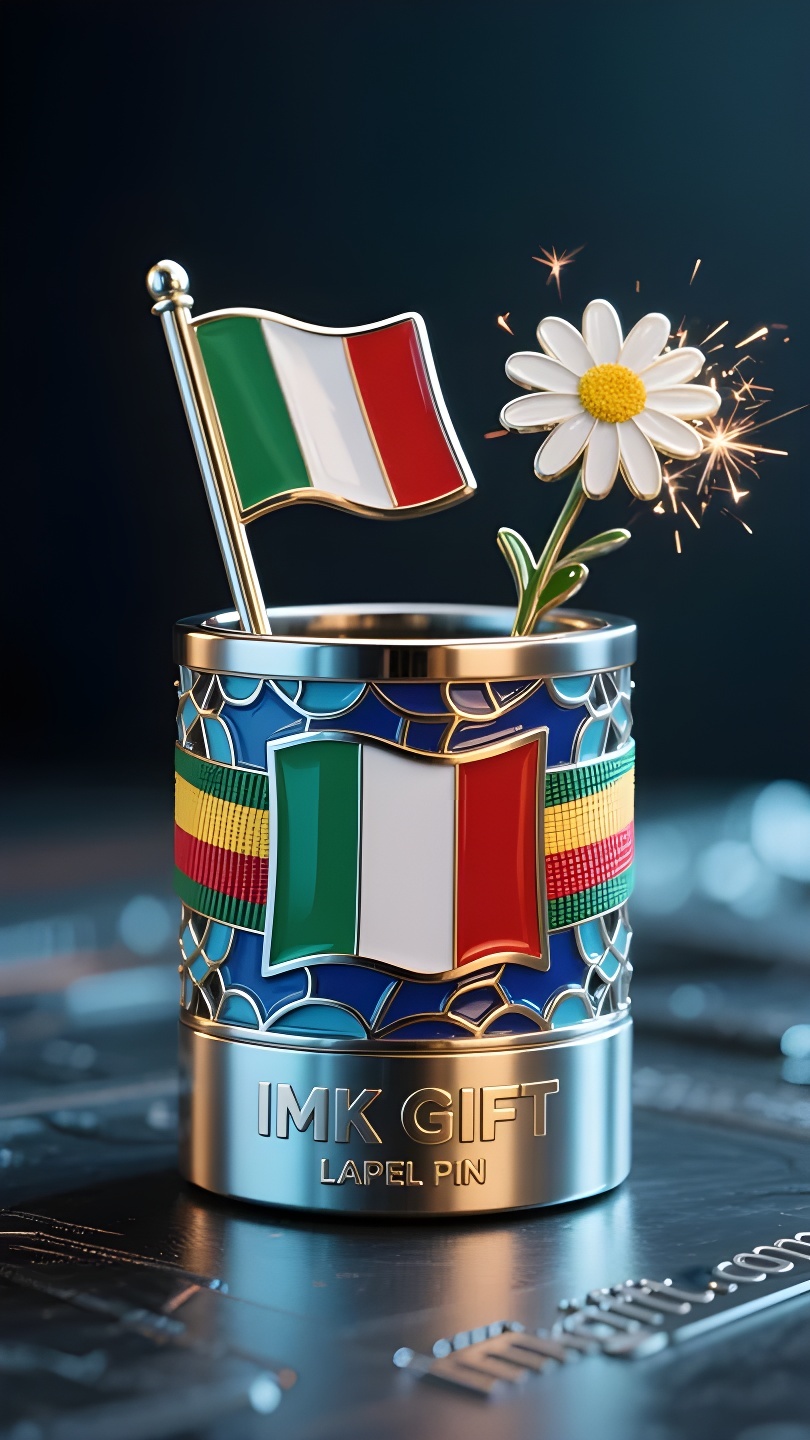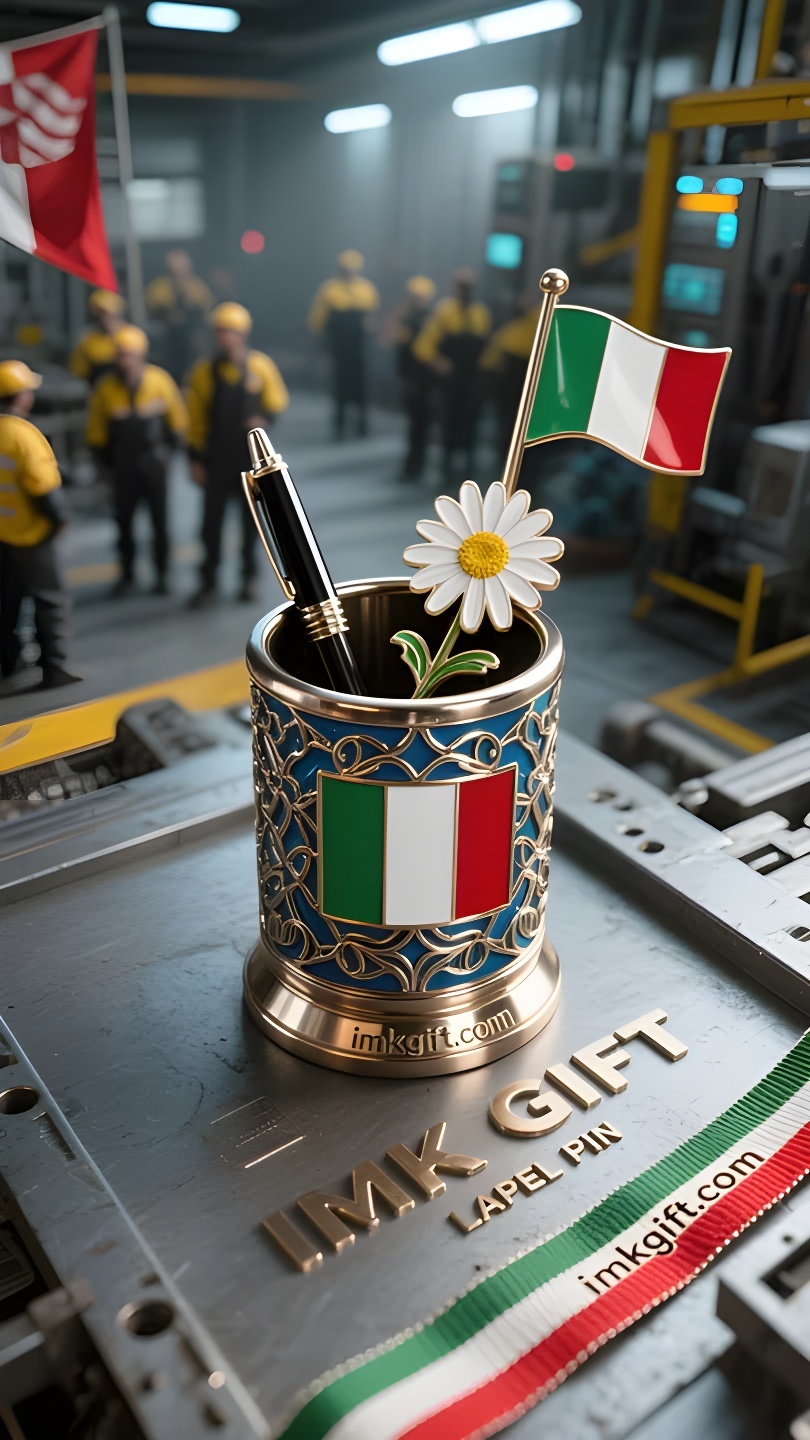in989-Margherita-Tricolore-La-luce-dell-39-Appennino-che-fiorisce-sulla-punta-della-penna
▼
Giugno è il mese commemorativo della Festa della Repubblica Italiana (2 giugno). Mentre sventola la bandiera nazionale verde, bianca e rossa, un portapenne a forma di margherita sboccia sulla scrivania racconta l’eterna vitalità di questa terra. Il verde della bandiera italiana simboleggia speranza e libertà, il bianco pace e fede, e il rosso coraggio ed entusiasmo. I tre colori si intrecciano proprio come il background culturale della penisola appenninica: il Rinascimento è nato tra i tumulti e il Paese moderno è stato ricostruito tra le rovine. E la margherita, fiore che simboleggia purezza e rinascita nel cuore degli italiani, si trasforma in un portapenne, che nasconde un profondo pensiero filosofico. La forma rotonda del portapenne a forma di margherita rappresenta metaforicamente l’inclusività della conoscenza, e la postura eretta del portapenne riecheggia il monito della “retta via” nella Divina Commedia di Dante. Quando le persone vi ripongono gli strumenti per scrivere, usano la creazione per combattere l’oblio e usano le parole per perpetuare la civiltà. Durante il Rinascimento, gli artigiani fiorentini incidevano motivi a margherita su portapenne in bronzo per ricordare agli studiosi di mantenere una curiosità pura come i petali. I designer italiani di oggi ereditano questo spirito e utilizzano plastica riciclata per rimodellare il portapenne a margherita, permettendo ai concetti di tutela ambientale di coesistere con l’estetica classica. La bandiera tricolore testimonia la storia della rinascita nazionale e il portapenne a margherita porta con sé la missione di un’eredità culturale. Entrambi raccontano la stessa storia: la vera vitalità non risiede nello splendore eterno, ma nel coraggio di continuare a scrivere e creare in situazioni difficili. Proprio come la penna d’oca di Dante immersa nell’inchiostro che attraversa l’inferno, ogni figura che persiste nella scrittura continua a scrivere la gloria eterna della penisola appenninica.
June is the commemorative month of Italy’s Republic Day (June 2). As the green, white and red national flag flutters, a daisy pen holder blooming on the desk is telling the eternal vitality of this land. The green of the Italian flag symbolizes hope and freedom, the white represents peace and faith, and the red implies courage and enthusiasm. The three colors interweave just like the civilization background of the Apennine Peninsula: the Renaissance was born in turmoil, and the modern country was rebuilt in ruins. And the daisy, a flower that symbolizes purity and rebirth in the hearts of Italians, is made into a pen holder, which hides a profound philosophical thought. The round shape of the daisy pen holder metaphorically represents the inclusiveness of knowledge, and the upright posture of the pen holder echoes the warning of the “straight road” in Dante’s “Divine Comedy”. When people put writing tools in it, they are using creation to fight against forgetting and using words to continue civilization. During the Renaissance, Florentine craftsmen engraved daisy patterns on bronze pen holders to remind scholars to maintain a curiosity as pure as petals. Today’s Italian designers inherit this spirit and use recycled plastic to reshape the daisy pen holder, allowing environmental protection concepts to coexist with classical aesthetics. The tricolor flag witnesses the history of national rebirth, and the daisy pen holder carries the mission of cultural inheritance. They both tell the same story: the true vitality does not lie in eternal splendor, but in the courage to keep writing and creating in difficult situations. Just like Dante’s feather pen dipped in ink and passing through hell, every figure who persists in writing is continuing to write the eternal glory of the Apennine Peninsula.
六月是意大利共和国日(6月2日)的纪念月,绿白红三色国旗飘扬之际,一朵绽放于书桌的雏菊笔筒,正诉说着这片土地永恒的生机。意大利国旗的绿色象征希望与自由,白色代表和平与信念,红色寓意勇气与热情,三色交织恰如亚平宁半岛的文明底色:在动荡中孕育文艺复兴,在废墟里重建现代国家。而雏菊,这个意大利人心中象征纯洁与重生的花朵,被制成笔筒时,更暗藏深邃的哲思。
雏菊笔筒的圆润造型隐喻知识的包容性,笔杆直立的姿态呼应着但丁《神曲》中”笔直之路”的警示。当人们将书写工具置入其中,便是在用创造对抗遗忘,用文字延续文明。文艺复兴时期,佛罗伦萨工匠将雏菊纹样刻在青铜笔筒上,提醒学者们保持如花瓣般纯粹的好奇心。今天的意大利设计师继承这种精神,用再生塑料重塑雏菊笔筒,让环保理念与古典美学共生。
三色旗见证着国家重生的历史,雏菊笔筒承载着文化传承的使命。它们共同诉说着:真正的生命力不在于永恒的绚烂,而在于困境中依然保持书写与创造的勇气。正如但丁蘸着墨水的羽毛笔穿越地狱,每个执着书写的身影,都在续写着亚平宁半岛不灭的光辉。
▼
Contact Us
📞 Tel: +0086-760-85286839
📧 Email: sales3@imkgift.com








